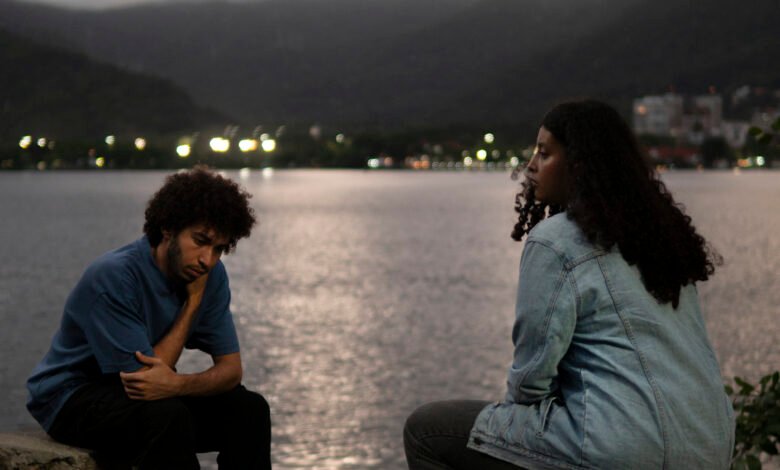Sad Shayari Pics: Where Words and Images Weave a Tapestry of Heartache

In the digital age, emotions find expression not just through words but through the haunting marriage of poetry and visuals. Sad shayari pics—melancholic verses layered over evocative imagery—capture the essence of sorrow in a way that resonates deeply with the soul. These creations are more than mere social media posts; they are windows into fragmented hearts, blending the rawness of Urdu poetry with the silent language of pictures. From misty landscapes to tear-stained letters, every element in a sad shayari pic amplifies the ache of unspoken grief. This article delves into the art and emotion behind these poignant compositions, exploring how they turn pain into a shared, almost sacred, experience.
The Alchemy of Text and Image: “A Tear’s Shadow on Paper”
Sad shayari pics thrive on synergy—the way a lone candle’s flicker mirrors a verse about fading hope, or how a barren tree echoes lines on abandonment. The text doesn’t just accompany the image; it breathes life into it. For instance, a shayari about lost love gains depth when paired with a photo of an empty bench at dusk, its emptiness symbolizing absence. This fusion transforms abstract emotions into tangible scenes, allowing viewers to feel the words through their eyes. The image becomes a vessel, carrying the weight of the poetry into the viewer’s subconscious.
Metaphors in Monochrome: “Broken Chains and Unanswered Letters”
Visual metaphors dominate sad shayari pics, translating poetic symbolism into stark imagery. A shattered mirror might accompany verses about fractured self-worth, while raindrops on a windowpane mirror tears described in the text. These visuals act as silent translators, bridging the gap between the poet’s intent and the audience’s perception. A wilted rose juxtaposed with a line like “Mohabbat ka phool bhi murjha gaya” (Even love’s flower has withered) creates a universal language of despair, transcending linguistic barriers.
The Palette of Pain: “Blues, Greys, and the Color of Longing”
Color psychology plays a pivotal role in amplifying sorrow. Muted tones—slate grey, deep navy, or washed-out sepia—evoke a sense of timeless melancholy. A shayari about loneliness might float over a foggy mountain range, where the greyness mirrors emotional numbness. Conversely, a single vibrant hue (a red scarf in a monochrome scene) can symbolize lingering passion in a world of desolation. These choices aren’t accidental; they’re deliberate strokes to steer the viewer’s heart.
Faces Without Names: “Silhouettes and the Art of Anonymity”
Many sad shayari pics feature faceless figures—shadowy silhouettes, blurred faces, or hands clutching crumpled letters. This anonymity universalizes the pain, inviting viewers to project their own stories onto the image. A verse like “Kisi ke naam ka izhaar nahi hota” (Some names remain unspoken) gains power when paired with a figure gazing into a distant horizon, their identity erased. The lack of specificity turns personal grief into collective catharsis.
Digital Age Elegies: “Scrolling Through Shared Sorrow”
Social media has democratized grief, and sad shayari pics thrive on platforms like Instagram and Pinterest. They offer bite-sized solace to a generation that consumes emotions rapidly. A 15-second scroll past a shayari pic—a deserted train station with text like “Mera intezar khatam hua, par tum nahi aaye” (My wait ended, but you never came)—can pause a hurried mind, creating moments of unexpected reflection. These posts build communities of strangers bonded by unspoken understanding.
Nostalgia in Pixels: “Old Photographs and Fading Ink”
Vintage aesthetics dominate many shayari pics, with textures of crumpled paper, ink blots, or grainy film adding layers of nostalgia. A verse about forgotten promises might overlay a faded love letter, its words barely legible. This “aged” visual style evokes longing for the past, making the pain feel both intimate and ancient. It’s a reminder that heartbreak is timeless—a feeling as old as humanity itself.
Minimalism and the Weight of Silence: “Empty Spaces, Full Hearts”
Some of the most powerful shayari pics use negative space—a vast sky, an empty room—to emphasize isolation. A single line like “Tanhai ne aawargi ka rang pehen liya” (Loneliness has dressed in wanderlust) placed in the corner of a desert landscape magnifies the void. Minimalism forces the viewer to sit with the emotion, undistracted, making the silence between the words as loud as the poetry itself.
Cultural Echoes: “Ghazals in the Digital Frame”
Sad shayari pics often draw from Urdu literary traditions, blending classical motifs with modern design. Images of crescent moons, veiled figures, or antique lamps nod to ghazals and nazms, while contemporary fonts and filters keep them relatable. This duality honors the past while making sorrow accessible to today’s audience. A sher (couplet) by Mirza Ghalib paired with a neon-lit cityscape bridges centuries, proving that heartache transcends eras.
Creation as Catharsis: “When the Artist Becomes the Mourner”
For many creators, designing sad shayari pics is therapeutic. Curating the image, selecting the verse, and adjusting hues become rituals of release. A photographer might pair their own stormy seascape with a personal shayari about inner turmoil, turning private pain into public art. This process mirrors the Urdu tradition of “dard-e-dil” (heartache) as a muse, transforming suffering into something beautiful—and shared.
Conclusion:
Sad shayari pics are more than fleeting digital art; they’re a testament to humanity’s unyielding need to articulate grief. In blending the eloquence of Urdu poetry with the visceral punch of imagery, they create a sanctuary for the brokenhearted. Each pic is a paradox—a celebration of sorrow, a masterpiece of melancholy. As viewers, we don’t just observe them; we inhabit them, finding fragments of our own stories in the interplay of shadow and verse. In a world that often demands smiles, these quiet compositions remind us that sadness, too, deserves its canvas.



